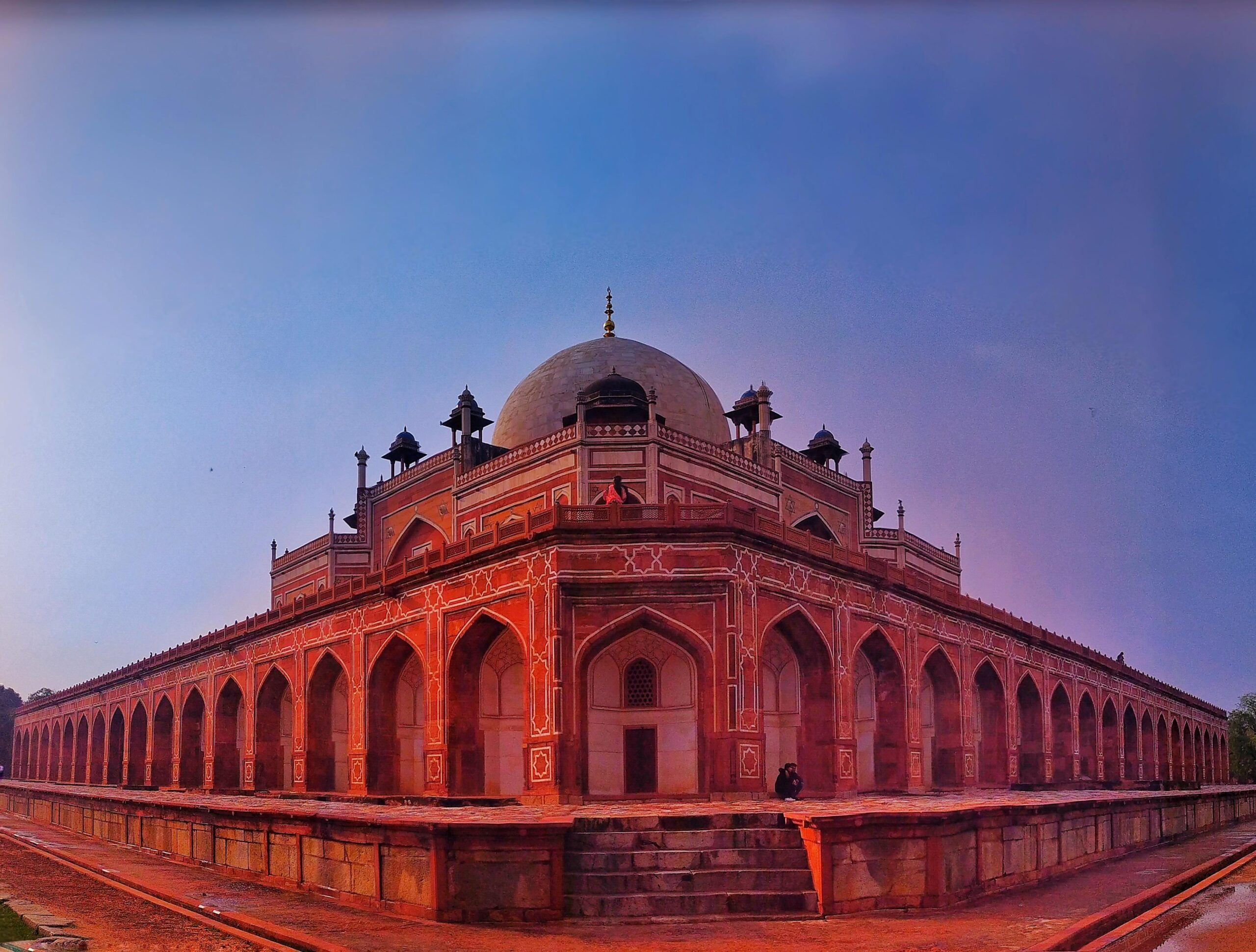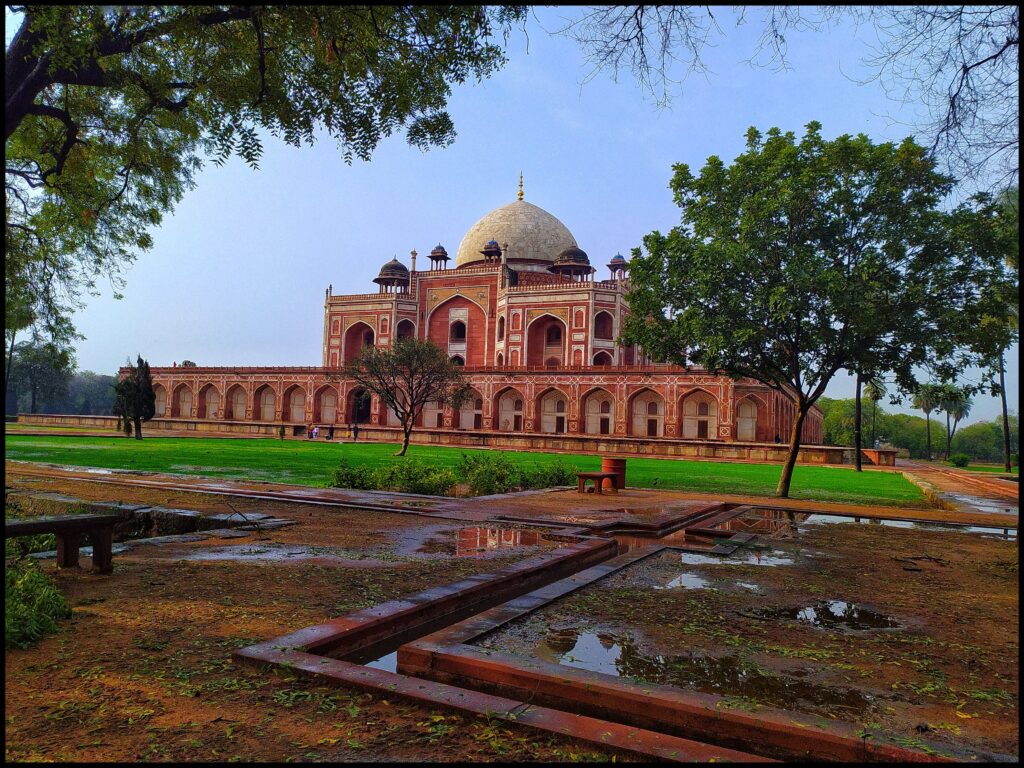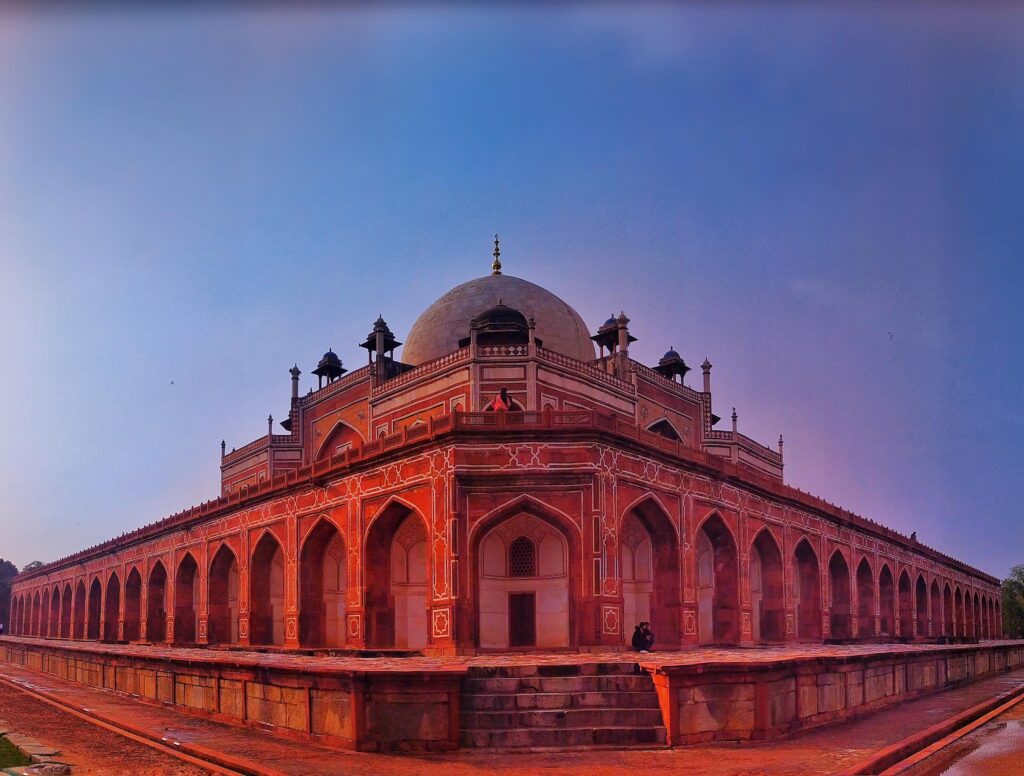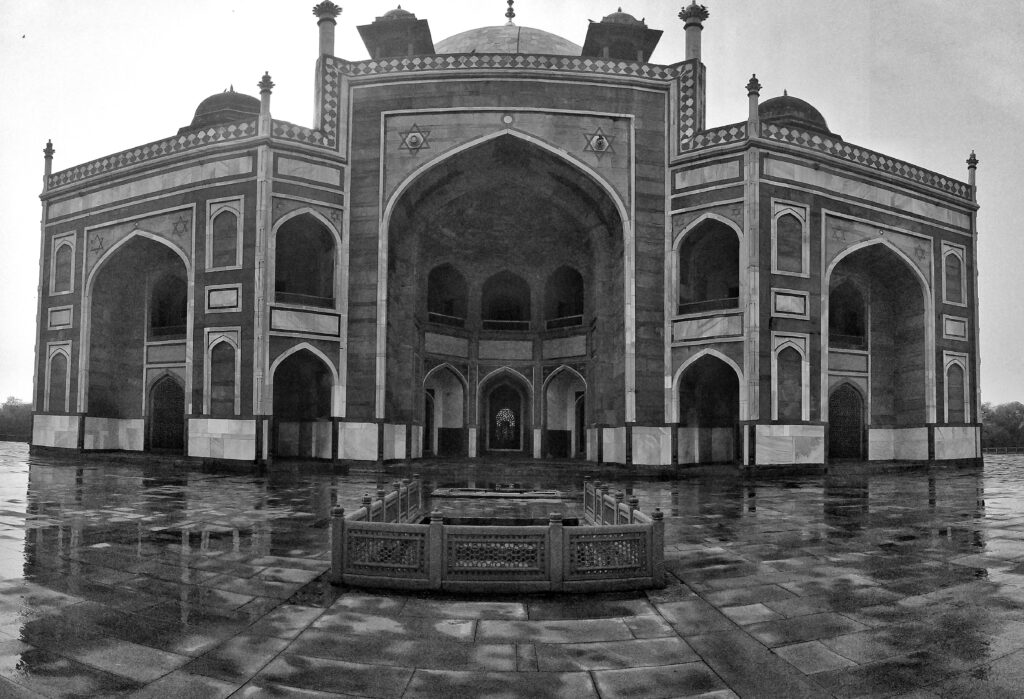

Humayun Tomb, also known as Maqbara-e-Humayun, is an architectural marvel. It is thought to be the earliest garden tomb created in India. It is the Mughal emperor Humayun’s mausoleum. Humayun’s tomb was designated a UNESCO World Heritage Site in 1993, adding to the significance of this remarkable red sandstone building. Humayun’s mausoleum was the first edifice in India to be erected in the Mughal architectural style.
Bega Begum, also known as Haji Begum, was the first and principal consort of the Mughal emperor and erected this monument. Mirak Mirza Ghiyas, a Persian architect, was then chosen to create the mausoleum.
Unfortunately, the architect, Mirak Mirza Ghiyas, died before the complex was finished. As a result, Sayyid Muhammad ibn Mirak Ghiyath Ud Din, his father’s architect, finished the construction. The construction of Humayun’s tomb began in 1565 and was finished in 1572. The construction of the mausoleum began nine years after Emperor Humayun’s death.

The Humayun Tomb Compound
Humayun’s tomb is erected on a 7-meter-high elevated platform in the centre of a garden complex. The garden around the tomb is Char Bagh, a classic Persian arrangement that represents the garden of heaven.
The tomb of Humayun is 47 metres high and 91 metres broad, with domes that are 42.5 metres high. Its red sandstone edifice with white marble twin domes is a sight to behold. The tomb’s overall splendour is enhanced with latticework, pietra dura flooring, and attics.
Humayun’s tomb complex contains a number of notable structures, including tombs, mosques, and a hotel. Among the notable structures are Arab Sarai, Nila Guband, and Bu Halima.

The complete Humayun tomb complex has around 150 graves, including the tombs of Bega Begum, Hamida Banu Begum, Dara Shikoh, and Isa Khan located within the main complex of the tomb.
Other Mughal royal graves include those of Emperor Jahandar Shah, Muhammad Kam Bakhsh Farrukhsiyar, Rafi Ud-Daulat, Rafi Ul-Darjat, and Alamgir II.
Outside the Humayun’s compound lies the mausoleum of Hazrat Nizamuddin Auliya, a 14th-century Sufi saint. Many Mughal royals were buried in the Humayun’s tomb complex because it was deemed fortunate to be buried near the shrine.
Timings and Entrance Fees to Humayun Tomb
The hours of operation at Humayun’s Tomb are from 6 a.m. to 6 p.m. For Indian cities and visitors from SAARC countries (Bangladesh, Nepal, Bhutan, Sri Lanka, Pakistan, Maldives, and Afghanistan), the entrance price to Humayun’s tomb is Rs.30 (Bangladesh, Nepal, Bhutan, Sri Lanka, Thailand and Myanmar). For travellers from other countries, the ticket fee is Rs. 500 per person.
Online booking
Visit the Ministry of Culture website to book the ticket in advance.
How To Reach Humayun Tomb
Tourists will find a metro station and bus stops nearby, making it relatively easy to reach Humayun’s tomb. It is directly across the street from the Dargah Nizamuddin. The nearest metro station to Humayun’s Tomb is Jawaharlal Nehru Stadium on the Violet line, which is around 2 kilometres away. Jorbagh metro station on the yellow line is also nearby, around 5 kilometres away.
There are also frequent air-conditioned and non-air-conditioned city buses that travel from Rajiv Chowk, ISBT, and Nizamuddin to Humayun’s tomb complex. Tourists can also ride cabs or auto-rickshaws owned by locals.